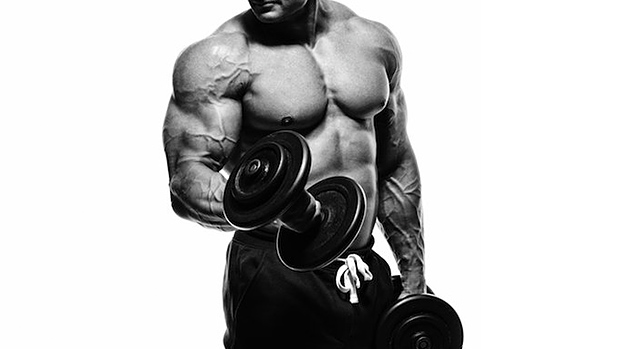The Reason You’re Not Getting Better
The way you handle your off days can greatly affect your ability to build muscle and get stronger. For the dedicated lifter, the problem isn’t that you take an occasional rest day. The problem is that you don’t take ENOUGH rest days and you don’t time them wisely in your training week.
Off days can be a torture for iron addicts. For many people, a rest day makes them feel like they’re slacking off, so they train six or even seven days per week. Yet when you look at the most successful strength athletes and bodybuilders, four training days a week, sometimes five, seems to be the most common frequency.
Those training six or seven days a week tend to progress at a slower pace than those hitting the gym four to five days a week. There are of course exceptions, but unless you’re genetically gifted, you should base your training decisions on the most widely successful approach, not on the exception.
It’s a Growth Day, Not An Off Day
Change your thinking like this:
- Think “stimulation days” instead of training days.
- Think “growth days” instead of rest days.
When you take a rest/growth day you build more muscle, replenish glycogen stores more easily, and let the nervous system get back to an optimal working state. This will help you grow faster, but it’ll also improve your performance on the day you get back to the gym.
The truth is, during your off days crucial things happen that make it easier to grow and get stronger. Your body has limited resources. And if you invest more resources in a training session, rather than resting, you’ll have fewer available to fuel adaptation and growth.
During rest days you devote more of your resources to growth and repair. Your nervous, immune, and hormonal systems also get back to a situation conducive to growth and performance. If you’re well rested you’ll be able to perform at a higher level and do more volume, both of which will make the session more effective.
“Growth days” make you grow directly by allowing you to recover. They make you grow indirectly by allowing your to put a greater stimulation on your body during your lifting sessions.
A Big Nutrition Mistake
Ask people what they do for nutrition during their off days and most will tell you they lower calorie or carb intake. (Heck, I’ve even recommended it in the past.) It’s a common recommendation, but it’s wrong.
People think that since they won’t be training and burning as much fuel, they shouldn’t consume the same amount of carbs or else they risk gaining fat. If your goal is STRICTLY fat loss there may be some value to this. But if you’re looking to build as much muscle and strength as possible, you should see your off days as days where you’re trying to do everything you can to maximize growth and performance, not days where you don’t do anything. Think of your time off as an investment.
With this in mind, what should you do nutrition-wise? Cut carbs and calories, leaving you with muscles that aren’t fully replenished with muscle glycogen and leaving you unable to take advantage of the anabolic properties of insulin? No! Do the opposite.
Accelerate Growth Day Gains
Insulin is the most anabolic hormone in the body. It shuts down catabolism (protein breakdown or muscle wasting) and ramps up anabolism – protein synthesis or building muscle. It also activates mTor which triggers muscle growth and increases glucose storage inside the muscles. Muscles being full of glycogen is itself anabolic. As a bonus, a fuller muscle is a stronger muscle.
If your goal is maximum muscle growth and strength gains, it’s important to consume plenty of quality carbs and protein during those off/growth days. See each growth day as the only day in the week where the body is allowed to build muscle. If that were the case, what would you do on that day to make sure that you get every possible ounce of muscle growth? Certainly not lower your calorie or carb intake!
At the very least, keep calorie and carb intakes the same or increase them a bit. I’d also increase protein intake slightly to take advantage of the more anabolic state.
How Many Growth Days Per Week?
Most people should train four days per week. For a normal person, four HARD sessions per week is about all that can be done. Sure, training more often is possible, but it would require the careful and precise use of training days with a much lower stress level. I don’t like these because I always feel like I have to restrain myself and “train with the brakes on.”
If you like to go balls-out, four training days a week is the best option to start with. That leaves us with three rest/growth days per week. Occasionally doing five sessions per week is fine, which would leave us with two rest/growth days. But this isn’t the ideal long-term solution.

Where Do You Place Growth Days?
One rule: Avoid taking two days off in a row. Performance tends to be flat after two days of rest and the quality of the workout always suffers. So here’s the best option for three growth days and four training days in a week, without having two days off in a row:
- Monday: Training day 1
- Tuesday: Training day 2
- Wednesday: Growth day 1
- Thursday: Training day 3
- Friday: Growth day 2
- Saturday: Training day 4
- Sunday: Growth day 3
How Do You Structure Training Days?

Make the heaviest days Thursday and Saturday. These are the days where performance should be at its highest. On Monday, in theory you could also go super heavy, but since you have a second training day in a row we don’t want lingering neural fatigue. Make Monday a challenging session but not as heavy as Thursday and Saturday. It can have a bit more volume however.
Tuesday is the training day that should be the lightest – understanding that light is relative – with the highest volume. Another option is to train your lagging muscle group(s) with higher volume on Tuesday.
Regardless of the split you’re using, here’s my recommendation:
- Monday: Moderate loading and volume
- Tuesday: Highest training volume
- Wednesday: Growth day 1
- Thursday: Heavy training
- Friday: Growth day 2
- Saturday: Heavy training
- Sunday: Growth day 3
Don’t Focus On The Wrong Things
The only thing that matters with training is getting results. Period. That should be how you evaluate how good a job you’re doing. Sadly, I see more and more people taking pride in other things – the amount of work done being at the top of the list.
It goes like this: Joe is passionate about training. He reads everything he can find and desperately want to earn the respect of other gym rats. But Joe isn’t really muscular, nor is he strong. And his training doesn’t seem to be giving him the gains he’d like.
So Joe begins to train more and more. At first it’s in hope of getting more results, but eventually doing more work becomes his new goal. Joe isn’t getting more results, but he prides himself on training harder and more often than any other person. That’s a vicious circle because he’s killing his gains by training too much. But by now his only source of pride is how much work he can do… and then he gets hurt.
Listen, if you want maximum growth and progress you need those rest/growth days. Becoming a stimulus addict, refusing to take days off, and piling on volume will just leave you frustrated and likely injured.
Stop Compensating
The popularity of “functional training” and weird exercises comes from the same place: a frustration due to the inability to get stronger and more muscular. “Hey, that guy might be a lot stronger and more muscular than me, but I’d like to see him do a Turkish get-up on a stability ball!”
I’m not against any training method or approach, but these must be done with the sole purpose of getting more results. If they don’t lead to better results, you’re simply doing them to feel good about yourself, compensating for your lack of real progress.
Invest in the Next Workout
Let’s pretend that Friday you have a competition or a physical test. You have to have a great performance – either lifting heavy or being able to do a ton of high quality work. You know that you’ll be judged on your performance that day. What will you do the day before?
Will you go running on Thursday? Will you do hill sprints? Will you pump up your shoulders? Of course not. You wouldn’t put your body through any fatigue that might interfere with your performance on Friday.
THAT’S how you need to see your rest/growth days and workouts. At each workout you need to perform at the highest possible level. On your rest/growth days you need to do everything you can to put your body in the best possible situation to perform at the highest level. That holds true for your nutrition, supplementation, and training.
Growth days are meant to make the magic happen: growing more muscle and preparing your body to perform the next day.
Trigger, Recover, Grow
Training really is that simple: the training session is there to trigger the biochemical responses that will tell your body to adapt and grow. Once that’s been triggered, doing more will simply deplete resources.
When you’ve triggered the right response, just allow the changes to occur without disturbing the processes. Yes, changes can still occur on days that you train, but for a maximal response you need to train super hard and then do everything you can to speed up recovery on the growth days.
While suboptimal workouts might occur due to unplanned events in your life, they should never happen because you were under-recovered from your previous sessions. Remember that the big problem with under-recovery is that it builds up. You might only cause a small deficit in recovery at each workout, but it’ll accumulate quickly, and when it does you can kiss your gains goodbye!
Train smarter. Rest harder.


